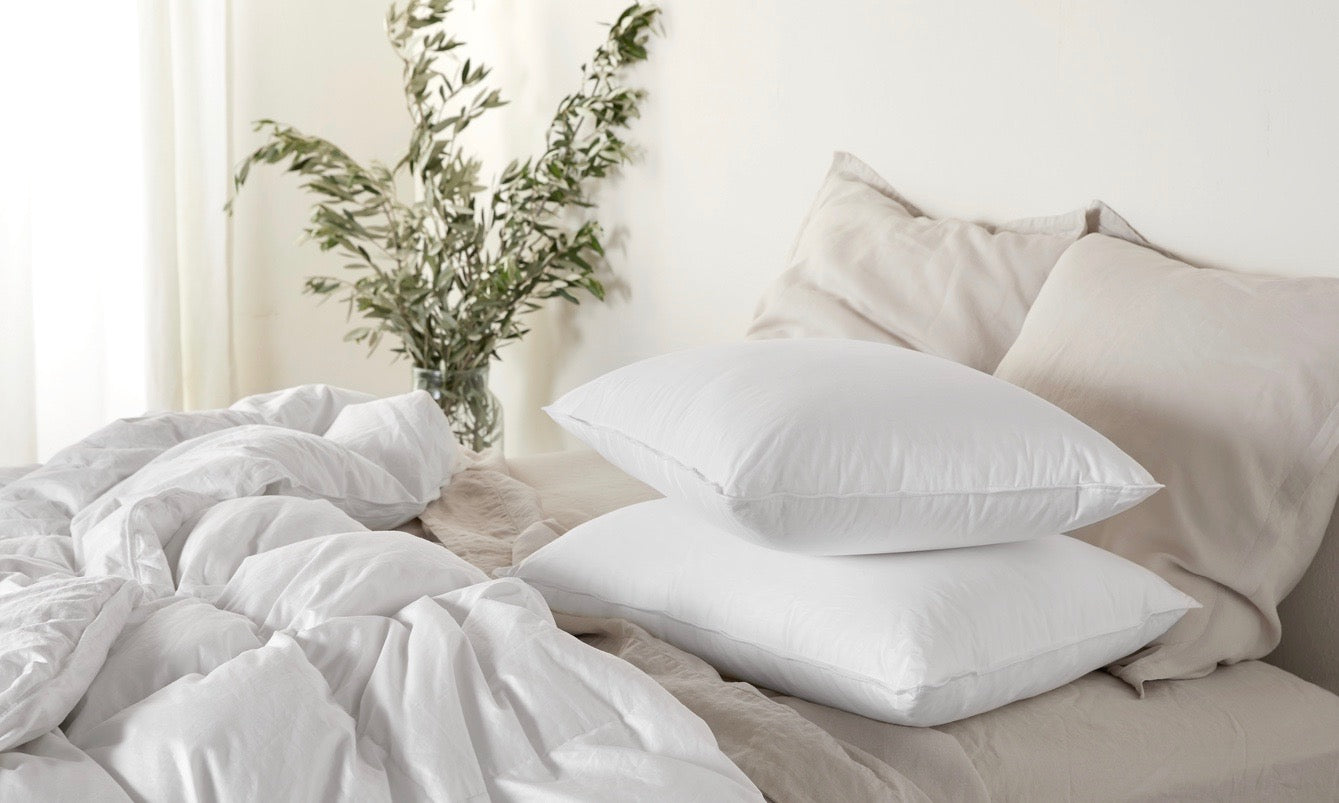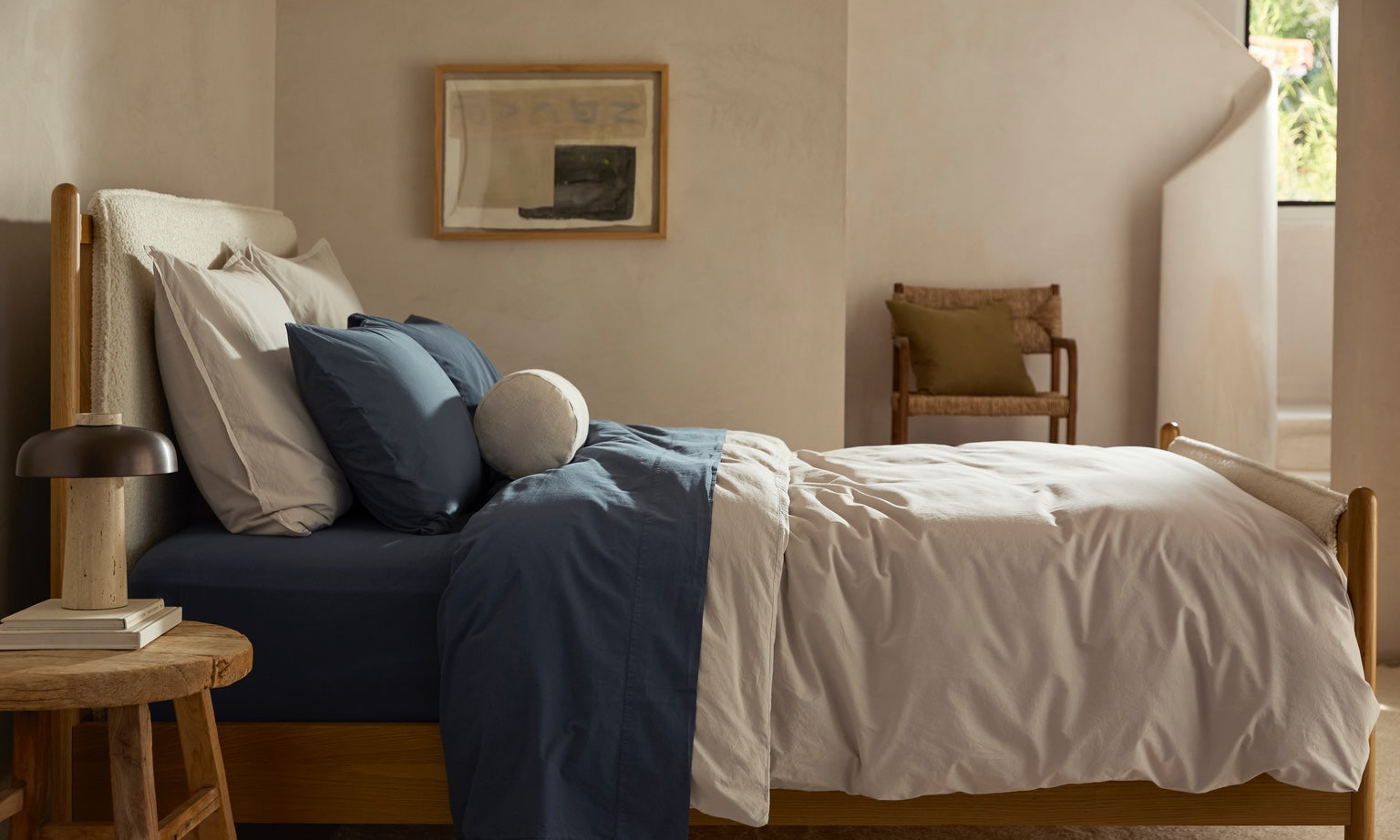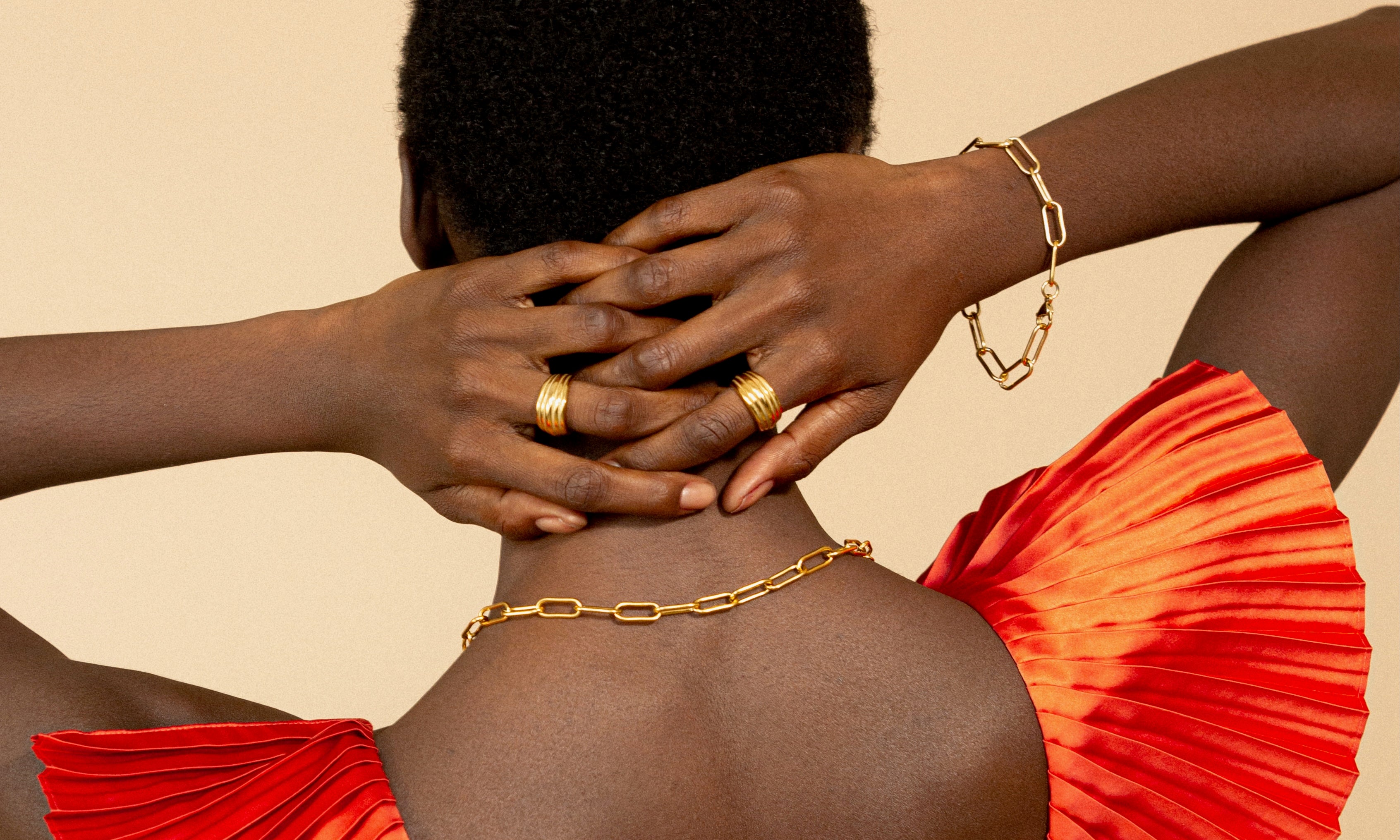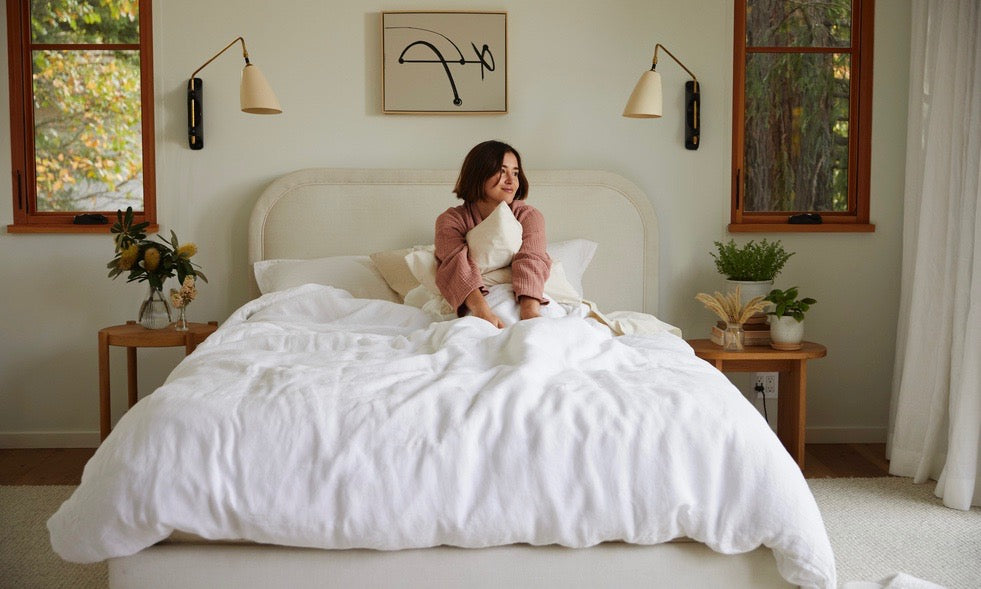
Pillow Guide: How to Choose the Right Pillow
Facts and ergonomic stats you must consider.
The perfect place to lay your head at night can help you fall asleep faster, stay asleep longer and feel more rested in the morning. Having said that, figuring out what type of pillow (or pillows) is best for you isn't always so simple. From size and firmness to shape and material, you've got your options cut out for you.
The right pillow is a very personal choice. One or many? Big and thick or little and lean? Above all, it’s like your momma said: What’s on the inside is what really counts. Our pillows are made with all natural down or down alternative filling – and in soft, medium or firm fill options – covered with a 100% Sateen cotton shell for comfort and protection. Plus we've added a side sleeper pillow option that breaks the wake, flip and fluff cycle of side sleeping on a regular pillow. With that in mind, here’s your guide on choosing the correct Parachute pillow for your sleeping preference: Soft, medium or firm.
What Bed Pillow Size Do You Need?
Pillows are usually selected after a mattress. Why? Just like sheets and duvets, they correspond with the size of your bed. Here's what you should know about the different pillow insert sizes and dimensions.
What Size is a Standard Pillow?Standard pillow dimensions are 20 x 26 inches. The versatile size works with twin and twin XL (extra-long) beds, as well as full and queen beds. People usually use two standard pillows for fulls and queens and one for twin beds. (That's why different sizes of sheets and duvet cover sets come with one or two pillowcases.)
Standard vs. Queen PillowsWhat size is a queen pillow? Queen-size pillow dimensions are 20 x 30 inches. Though they're a few inches longer than standard pillows, the two are interchangeable for the most part. You won't need larger pillowcases with queen pillows, as standard cases fit queen pillows and vice versa.
What Size is a King Pillow?King-size pillow dimensions are 20 x 36 inches. Measuring a full 10 inches longer than the standard pillow size, a pair goes side by side on king and California king beds.
What Size is a Euro Pillow?Like decorative pillow sizes, European pillow sizes vary, but they're almost always square-shaped. Parachute's Euro pillow dimensions are 26 x 26 inches. Twin beds usually call for one, whereas fulls, queens and kings typically look best with two.
What Size is a Body Pillow?Body pillow sizes vary as well, though most are about 54 x 20 inches. The long, oversized design can be used on any bed size for support, decoration or both.
Mixing and Matching Pillow SizesWhile standard pillows generally go on twin and queen beds and larger beds call for king size, pillow sizes can be mixed and matched to create a desired look or feel. You might use a standard pillow for sleeping, a king for reading in bed and a Euro for decoration. Then you might toss on a body pillow, which can offer support while you sleep and a touch of style when you make your bed.
Know Your Pillow Fill
Pillows can be stuffed with anything. We set out to design a pillow that was comfortable but also easy to care for, which ruled out uber-natural materials like buckwheat and horsehair. We also needed our pillows to stay cool in warm temperatures without firming up when temperatures drop – eliminating synthetics like memory foam and latex. Thus, we created two fill options: All natural European White Down and premium microfiber down alternative.
Down PillowsTried and true, down fill has staying power for good reason: It offers the best of both worlds. It’s supportive and durable but also fluffy and light. The down pillows you’ll find at Parachute boast a fill power of 750, which translates to a plump fill with a high percentage of down clusters and larger than average down cluster size (AKA dream zone).
Down Alternative PillowsIf you have dust or seasonal allergies or prefer vegan home decor, a feather fill may leave you sniffling while you snooze. Your best bet is a hypoallergenic Down Alternative Pillow. A modern microfiber fill (like the one used by Parachute) mimics the density of pure down, providing support without irritating sensitive systems.
What About the Euro?Euro pillows are the secret to a well-dressed bed. Add another layer of comfort and support to your bed with a perfectly appointed Euro. More for decoration than for sleep, our euro pillows are made of 5% down and 95% feather fill.
Learn more about organic pillow fills in our complete guide to the best organic pillows.
How to Choose a Pillow Based On Your Sleep Style
A pillow’s number one function is to align your head and neck with your spine while you sleep. Chances are you stare at the screen at your desk or in your hand all day. This all puts an extraordinary amount of strain on your neck which makes up to 17% of your spine (fun fact). Give your neck a rest and make sure it gets proper alignment. Your sleep style dictates what kind of support you need, so, let’s start there.
What is the Best Pillow for Back Sleepers?The best pillow for back sleepers is not too soft but also not too firm. Beware of a pillow that pushes your head too far forward, which could lead to a stiff neck in the morning. A profile of four to six inches is ideal. The takeaway: This position is usually most comfortable with a medium amount of support – choose medium or firm.
What is the Best Pillow for Stomach Sleepers?The best pillow for stomach sleepers is something with a fluffy, lightweight design. Some stomach sleepers are comfortable with no pillow at all, since their necks rest in a neutral position. If a bed without a pillow feels incomplete, opt for a pillow on the thinner side. A super plump pillow forces a stomach sleeper’s head into a pinched angle. The takeaway: This position generally requires the least amount of support – go with soft.
What is the Best Pillow for Side Sleepers?The best pillow for side sleepers is something that's plush yet supportive with a medium-density fill. Look for a gusseted option, as this will alleviate strain from your neck and shoulders while you slumber. It'll also prevent you from having to re-fluff it throughout the night. Body pillows can be good for side sleepers, too, because they offer hip support and reduce strain on the knees.
You’re in good company – studies show that up to 69% of people sleep on their side. This position also creates the widest distance between your ear and shoulder, so maintaining alignment requires a lot of loft. The takeaway: select the Side Sleeper Pillow. This pillow offers unparalleled support and perfect plushness.
What is the Best Pillow for Neck Pain?Ideal pillows for neck pain are typically medium-to-firm options with a semi-thick profile. Look for something with gussets, like a side-sleeper pillow that's 3 to 4 inches thick, as this will provide the most support for your neck. Alternatively, you can opt for a somewhat firm back-sleeper pillow.
What is the Best Pillow for Back Pain?The best pillow for back pain depends on your preferred sleeping position. If you sleep on your side, a gusseted design will alleviate strain on your shoulders and spine, and a body pillow can do the same thing for your lower back. Stomach sleepers can find relief from lower back pain with a body pillow too. If you're a back sleeper, go with a medium-firm pillow with plenty of neck support, as this will reduce pressure on your shoulders and spine.
What is the Best Cooling Pillow?A perfect cooling pillow is breathable and moisture-wicking. Down fill is usually ideal, as the naturally airy material doesn't trap heat and wicks away moisture. Additionally, you'll want a pillow with a cotton shell, which will encourage airflow and help keep you cool throughout the night.
What is the Best Pillow for Toddlers?The best pillow for toddlers is roughly 12 x 18 inches, a little less than half the size of a standard pillow. A breathable, hypoallergenic option is ideal, such as a down-alternative pillow with a 100% cotton shell. Bear in mind that it's safest for children to sleep without pillows until at least 12 months of age.
Choosing Pillowcases and Shams for Your Pillows
Once you figure out the size, shape, firmness and fill material, you're ready to choose your pillowcases. There are regular pillowcases, which protect the pillows you sleep with from dust and stains. And then there are shams, which are more decorative and usually placed in front of regular pillows when making the bed.
Pillowcases and shams come in a few different sizes and are usually about a half-inch longer than standard and king pillow dimensions. Euro shams are typically the same size or an inch or two smaller than the inserts, giving them an extra-plush look.
As for the fabric, you can choose from buttery-soft and undeniably cozy brushed cotton, crisp and cool percale, silky-smooth sateen or easy-breezy yet notably sturdy linen.
What Type of Pillow is Best for You?
Choosing the best pillow is always a sure way to improve your quality of sleep and ensure you awake feeling rested and refreshed. Be sure to take into account the filling inside of the pillow as well as the position in which you typically sleep as these factors can have a major impact on the type of pillow that is best suited for you.
The pillows you’ll find at Parachute come in varying sizes and densities with different fill materials, including down and down alternative. Light, lofty, plush, supportive — you name it, you'll find it here. Browse the selection today, and check out Parachute's pillow sizes chart for a refresher on the exact dimensions for each style.
Up Next:
Is it time to get new pillows? See our guide: How Often to Replace Pillows for Health and Comfort








